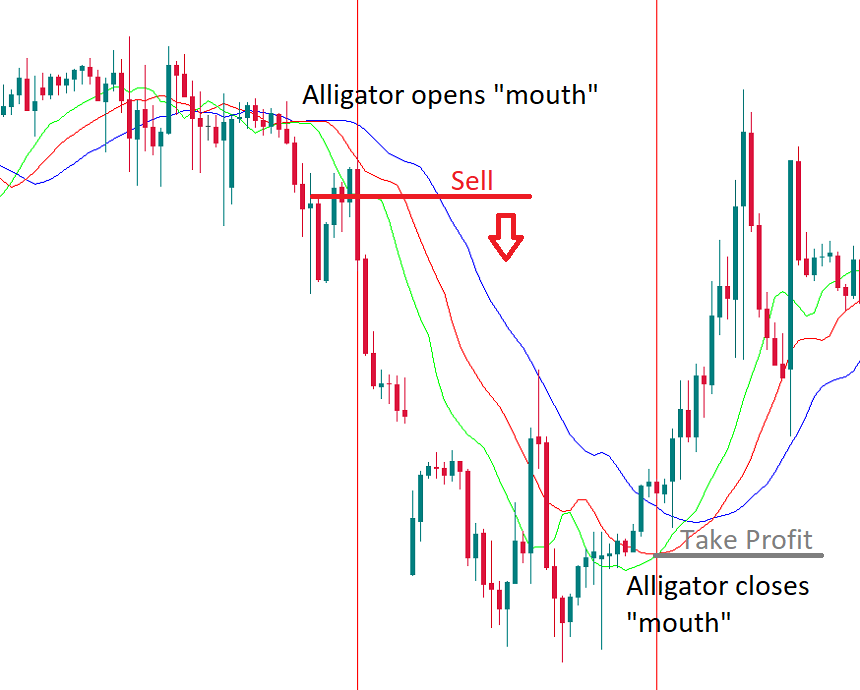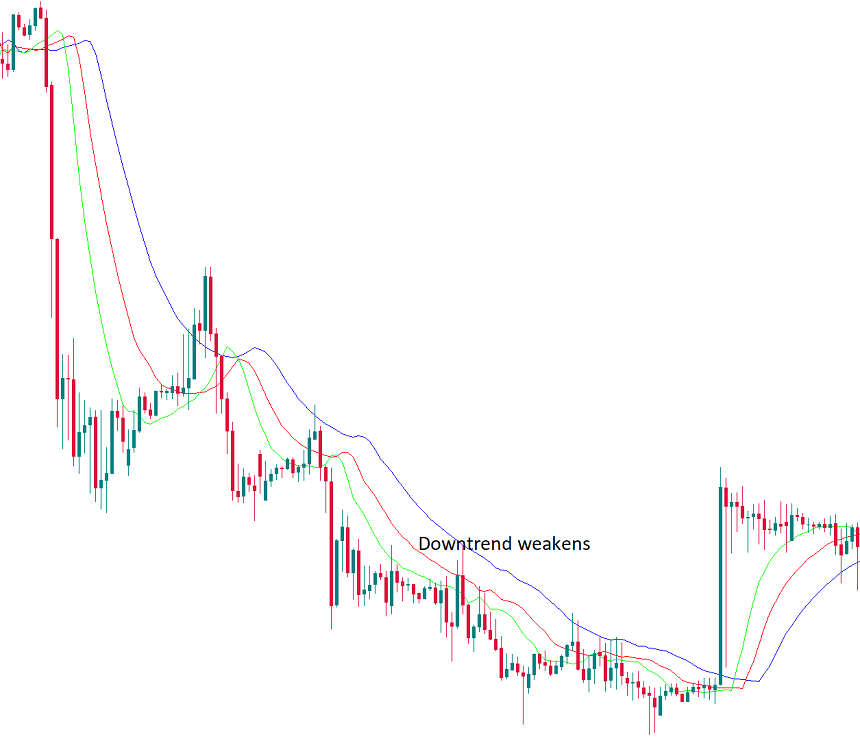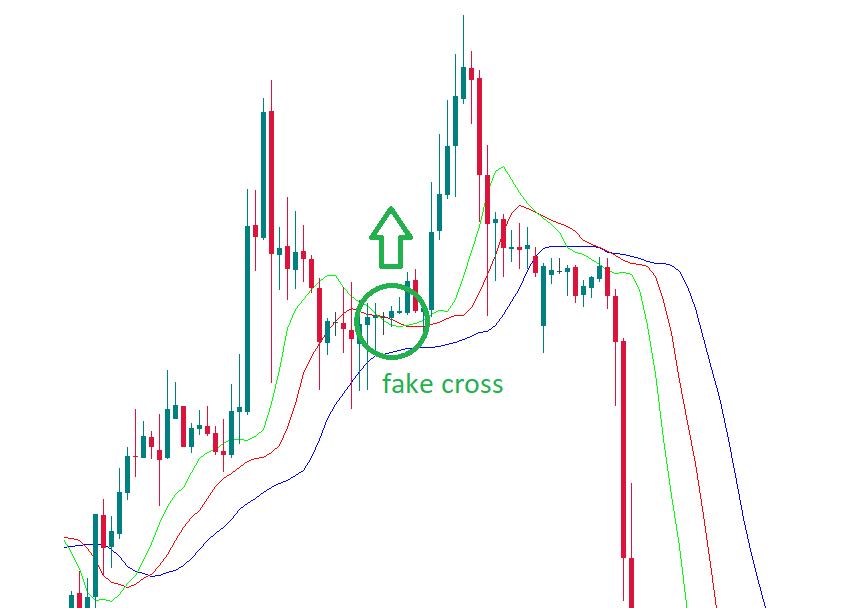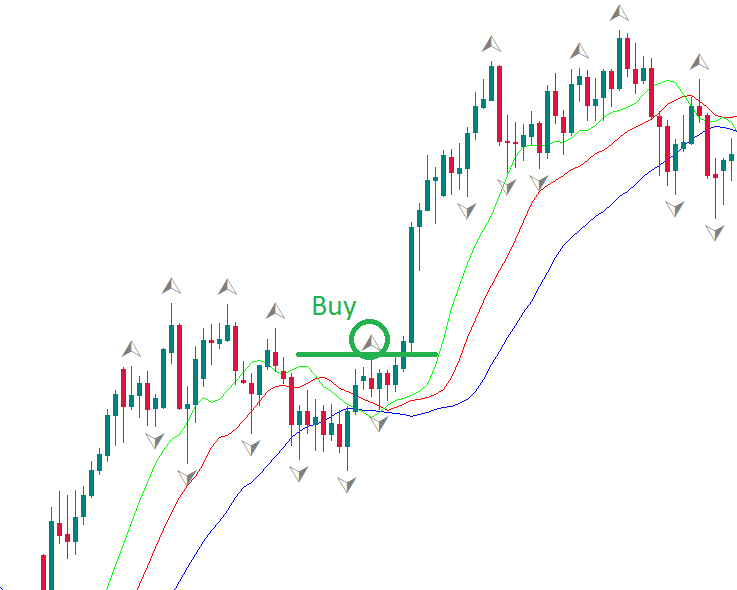The Alligator is an indicator developed by Bill Williams. Its purpose is to identify a trend and its direction and filter good signals from the bad ones thus avoiding the range-bound market that can lead to loses.
Construction of Alligator indicator
The indicator consists of 3 moving averages which are offset towards the future:
- Alligator’s Jaw (the blue line) – 13-period smoothed moving average which is moved 8 bars into the future.
- Alligator’s Teeth (the red line) – 8-period smoothed moving average which is moved 5 bars into the future.
- Alligator’s Lips (the green line) – 5-period smoothed moving average which is moved 3 bars into the future.

Bill Williams refers to these moving averages as “balance lines”. You can see that he also gave creative names to the indicator and its elements. His idea was to provide an example that will demonstrate the behavior of the market. This example is the alligator that alternates between the periods of sleep and hunting.
How to interpret Alligator indicator
When the Jaw, the Teeth, and the Lips are intertwined, it means the Alligator is asleep and there’s no uptrend or downtrend at the market. Bill Williams recommends staying out of the market during such periods. The longer the Alligator sleeps, the hungrier it wakes. When it wakes up from a long sleep, it opens its mouth (moving averages diverge) and gets ready to take a big bite of the market. It’s time to trade! The Alligator will chase the price far away and offer a decent profit to a trader. Having eaten enough, the Alligator goes back to sleep (moving averages converge), so it's time to take profit.

If the Alligator is not asleep, the market is either in an uptrend or a downtrend.
- If the price is above the Alligator's mouth then it's an uptrend. The indicator lines take a bullish order (green on the top, then red, then blue).
- If the price is below the Alligator's mouth then it's a downtrend. The Alligator’s lines take a bearish order (blue on the top, then red, then green).
The balance lines can provide resistance/support during the trend phase. The price can go beyond the green line for the short periods of time. The more it tries to break the green line, the weaker the trend becomes.

It’s also possible to look for the so-called “fake crosses” or the situations when the green line crosses the red line but then turns back. If such cross happened during an uptrend, you can buy once the green line returns above the red one.

Combining alligator with other tools
There may be many different combinations between Alligator and other tools of technical analysis. Here are some suggestions.
- Look for a reversal pattern (chart pattern or candlestick pattern). Once you have it, use the Alligator for confirmation (i.e. wait for the green line to cross other lines).
- Use the Alligator together with the Fractals. Wait for the moment when the Alligator is sleeping (balance lines are intertwined). Put a Buy Stop order 1 pip above the latest fractal up which is located above the alligator’s mouth.

Conclusion
The Alligator indicator has a unique formula that distinguishes it from a simple set of moving averages. Being based on moving averages, the indicator does react to the price changes with a time lag. At the same time, it can be used both for picking out the start of a new trend and a moment when a trend resumes after a correction. The Alligator is a ready-for-use trading system that can be accompanied by other analytical tools for the greater precision of trading. When you use the Alligator, check several timeframes of the chart.



0 commentaires:
Enregistrer un commentaire